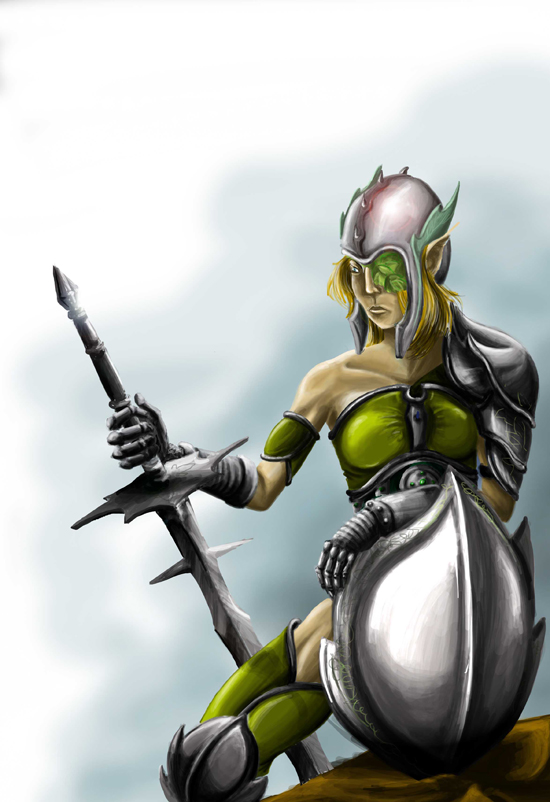
Not Really A Barbie Girl, In A Barbie World10
Posted In Art,Beauty,Blog,Geek,Internuts,Piercings & Body Mods,Tattoos,Trends,Vanity
by Bob Suicide
I don’t plan on ever growing up, though I do plan on single-handedly keeping the vinyl toy industry in business for many years to come. You name it, I’ve got it –– or it’s on preorder. However, even my embarrassingly childish addiction has standards. I have Legos, GI Joes, Transformers, Star Trek and Star Wars figures and replicas, plus Munnys and Dunnys of all sizes, but, I’m not –– and never really was –– a “Barbie girl.” I had a few as a kid, but even then I was more excited about my X-Men and Power Ranger figures than any doll.
However, I recently admitted a secret shame: “Typically, when I go to the toy store (which is often) to look for totally justifiable and not at all embarrassing toys, I make a small but shameful detour down the doll aisle.” And, recently, I even bought a few. Not Barbies, but Mattel’s similar line of dolls: Monster High.
Barbie has often been the target of body and self-image criticism. Thanks to her impossible anatomical proportions, moms across the globe decry the doll’s destruction of their child’s self-esteems –– but always after purchasing one or two because their daughters just had to have one. All the while, the overwhelming majority of girls rabidly desire and play with their dolls completely oblivious to the negative stigma their parents place upon them.

What I lack in “Barbie” fandom I make up for in love for Tokidoki designer Simone Legno, who recently released his own Tokidoki branded doll: the first officially tattooed Barbie. (There were two prior dolls that came with stickers mimicking temporary tattoos, but, since we’re getting technical, anything non-permanent doesn’t count.) With his amazing sense of art and style, Simone has done an amazing service to promote the acceptance of the beauty of tattoos within mainstream society. The doll is a perfect blend of the Tokidoki and Barbie brands. He’s mixed them together in a way that doesn’t compromise either. Part of me looks at that doll and says, “Fuck yeah. She looks cool.” Everything about the design is beautiful and “hip.” There’s an amazing attention to detail and the tattoos in particular portray Simone’s love of Japanese art that underlies all of his work.
There are few things in our American culture that are so identifiable as products of the “American Dream.” Coca Cola’s one and Barbie is another. They’ve been around for ages and while they maintain a classic aesthetic, they subtly evolve as the societal outlook changes. As tattoos are becoming more culturally accepted, it’s exciting to finally have a Barbie with tattoos. It’s exciting to think one of the largest toy manufacturers in the country, which boasts the country’s best selling doll –– a doll that has been defining standards of beauty for decades –– has now embraced tattoos. And, by dint of wearing those tattoos, Barbie and her parent company have declared tattoos to be both feminine and beautiful too.
As a kid, I never looked to my Barbie dolls for aspirational images of who or what I could be or how I should look and, honestly, I don’t think most kids do. Toys are toys. Toys don’t shape a kid’s personality. Children pick toys that reflect their own inner character traits. I didn’t look at my Wild C.A.T.s Zealot figure thinking I was going to become a covert warrior-spy. I liked that figure because I was already a strong girl with a penchant for the wilder side. As an adult however, I find the reverse bleeding into my conscious and I see why parents can easily label a doll as a “role-model.” So I’m pleased –– and even slightly inspired –– to see my formerly subversive love of lowbrow art and tattoos proudly emblazoned on one of America’s biggest icons.
But, another part of me can’t seem to get over the fact that, with the overabundance of pink and the perfectly bobbed hair, she’s eerily similar to Paris Hilton, which is not the best foot forward when it comes to portraying tattoos within the mainstream. If Barbie is an aspirational ambassador, the way parents like to portray her, I can understand the concern they might have for a day when “socialite” replaces “princess” as the number one thing little girls want to be when they grow up. But the same can be said of many of the Barbie dolls on the shelf. When each doll comes with matching purse and a mini dog that fits inside, when the “Dream Mansion” has its own massive walk in closet for shoes, it’s unfair to single this one doll out as the harbinger for the tacky, classless persona of a famous for being famous reality TV star. If this doll gets a scarlet “H,” they all do.
My ultimate gripe is with the “minivan mom’s” rallying cry that tattoos set a bad example for young girls. The gist of their complaint can be summed up by a comment from the Ms Twixt website for parents of Tween-age girls:
“Encouraging children that tattoos are cool is wrong, wrong, wrong.”
In reality, this doll isn’t meant to be a walking ad for the tattoo industry; It’s not even meant for children. It’s a $50 doll, and like the original plastic lady who inspired her, Bild Lilli, this Barbie is clearly marketed to the adult collector. While I can happily whip up a scenario whereby the fact that Barbie, as a shining example of the American Dream, has endorsed tattoos means that body art and modification is beautiful (as I just did), the truth of the matter is this is just a piece of lowbrow art which happens to take the form of a doll. While the doll is a highly publicized and identifiable one that’s typically marketed to children, the reality is two business saw the opportunity for a branding partnership and a hot pop-art designer modified an existing product for a high-end and limited run directed and solely marketed at collectors. No child is going to run their sticky fingers across a Tokidoki Barbie box on a WalMart shelf and the creators never intended that scenario to occur.
The doll aside, why is “encouraging” children to get tattoos wrong –– other than the fact those kids are going to be really bummed when they ride their trike up to the local shop to get their very own body mod and get turned away when they don’t have proper ID. There are laws set in place to ensure underage children can’t get tattoos. Doodling on skin with a sharpie never hurt anything but the occasional couch or really nice shirt (somthing I did ALL the time as a kid). Showing a child a picture of a doll or a person with a tattoo on them doesn’t immediately mean your toddler’s going to come home from preschool with a set of sleeves. Many of their real-life role models –– who are seen as wholesome and positive influences –– have them. Justin Bieber has a tattoo (don’t judge me for knowing that, I already feel enough shame!), and the only negative thing he’s ever inspired kids to get is really stupid haircuts (and his albums!).
Maybe the real answer is to let kids be kids, people be people, and dolls be dolls.
Related Posts
Confessions Of A Hardcore Gamer: The Rise of My Nightmares –– That I’ll Be Petting Kinect Puppies Long After Sega’s Zombie Horde Goes To Ground
Women Prefer Gaming To Sex – But There’s a Frigging Difference Between Fragging and Farmville
Damn You Zuckerberg!
You Might Be A Nerd If…
Confessions of a Shy Gamer
Red or Blue, Wonder Woman’s Boots Were Made For Walking
The Geek’s Guide to Getting Down Vol. 1 (A Brief Introduction)
The Geek’s Guide to Getting Down Vol. 2: Fragging and Other Group Activities
The Geek’s Guide to Getting Down Vol. 3: Co-Op Mode
The Geek’s Guide to Getting Down Vol. 4: The Blue Pill Or The Red Pill
The Geek’s Guide to Getting Down Vol. 5: Experiencing Pon Farr? Bring deodorant






